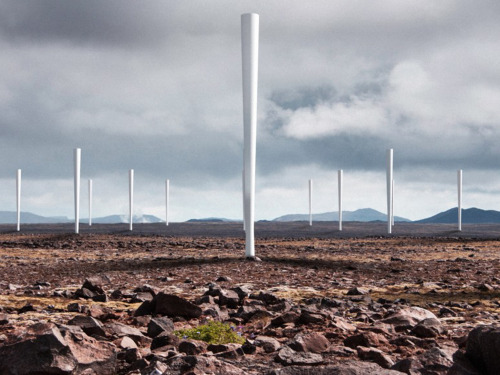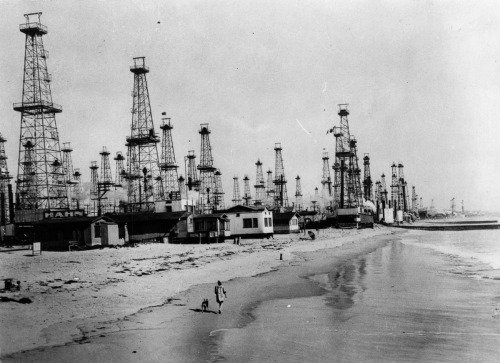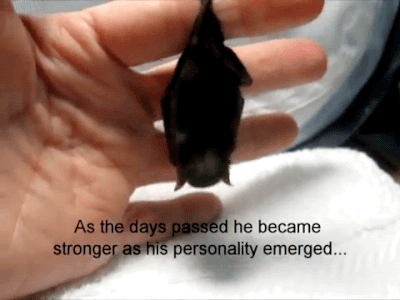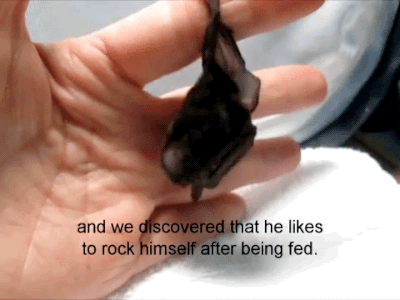Latest Posts by dotmpotter - Page 2

Bladeless wind turbines generate electricity by shaking, not spinning
Scientists hope to hugely reduce the cost of wind energy by removing the blades from wind farms, instead taking advantage of a special phenomenon to cause the turbines to violently shake.
Vortex, a startup from Spain, has developed the tall sticks known as Bladeless — white poles jutting out of the ground, that are built so that they can oscillate. They do so as a result of the way that the wind is whipped up around them, using a phenomenon that architects avoid happening to buildings and encouraging it so that the sticks shake.
They do so using vortices, which is where the company gets its name from. The bladeless turbines use special magnets to ensure that the turbines are optimised to shake the most they can, whatever speed the wind is travelling at.
As the sticks vibrate, that movement is converted into electricity by an alternator.


Plankton Are Multiplying Like Crazy Due to Warming
The population of a microscopic marine alga in the north Atlantic Ocean apparently is booming due to climate change, but scientists — who’ve been caught off-guard by the development — aren’t sure what it means for the aquatic environment. Details
You're only an "economic migrant" if you're poor and brown

Ned Richardson-Little is a Canadian academic who went to the US “in search of a better life,” did research in Germany and settled in the UK, something he was able to do thanks to his economic migrant grandfather who happened to have been born in Scotland.
Richardson contemplates the vilified category of “economic migrant” – “the greedy, dark other to those virtuously fleeing conflict” – and wonders how it is that no one has ever vilified him, given that he, too, is so obviously an “economic migrant.”
My grandparents (and father) were displaced people – Red Army deserters who destroyed their papers so that they could escape Europe via the DP boats to Canada – and I left Canada for the USA to found a company, then moved to the UK to represent an NGO and became a citizen, and have now moved back to the USA to write novels and campaign for better information policy. No one has ever called me an economic migrant.
https://boingboing.net/2015/11/29/youre-only-an-economic-mig.html

A 40-year-old man proposed to Salamatou when she was just 14. Every year, tens of thousands of girls are married before reaching their 18th birthday.
They are some of the most vulnerable girls on earth. They are denied their rights, they are at risk of abuse, their health is jeopardized, and their future prospects are limited.
From 25 November to 10 December, the world observes 16 days of activism against gender-based violence.
In Niger, which has one of the highest child marriage rates in the world, 16 extraordinary girls refused to become child brides. Read their stories here: http://www.unfpa.org/16-girls-16-stories-resistance
New Perovskite “Soccer Ball” Solar Cell Could Drive Down Costs

Low cost perovskite solar cell with tandem architecture and low cost fabrication…
Follow me on Twitter and Google.
Photo credit (cropped): “Highly efficient semi-transparent Perovskite solar cell partners with CIGS thin film solar cell” via Empa Pictures/flickr.com.










Bill Nye Explains The Connection Between Climate Change And Terrorism In Paris
President Obama made headlines Monday when he said during his remarks at COP21 that the climate change conference taking place in Paris is an “act of defiance” against terrorists who attacked the city earlier this month. Later on the same day, Bill Nye took that link a step further, explaining to HuffPost Live that the brutality in Paris was “a result of climate change.”
“This is just the start of things.”
Anyone who believes exponential growth can go on forever in a finite world is either a madman or an economist.
Kenneth Boulding

Well I’M ready for the holidays.

Today I am drawing Christmas card designs. For robots. #christmascard #christmas #xmas #merrychristmas #robot #robotart #art #illustration #instaartist #instaart #jonturner

Meet the 13-year-old who just built a cheap Braille printer out of Legos
Whatever you were doing in eighth grade, it probably wasn’t as awesome as what Shubham Banerjee has been up to.
The California 13-year-old wanted to know how blind people read, so he searched online and was shocked to find Braille printers cost up to $2,000.
“I know that there is a simpler way to do this.”
Ifixit repair kits: everything you need to fix everything

Ifixit produce open repair guides for everything imaginable, in a variety of languages, and help sustain a global community of independent repairers who divert electronics from e-waste dumps and keep poor and marginalized people connected to their work, school and families.
The Ifixit repair kits are thoughtful, high-specification, low-cost toolkits designed to work on all modern gadgets, as well as traditional ones (for example, Ifixit manufacture their own drivers for Apple’s bizarre “pentalobe” screws, which Apple had instructed its Genius Bar staff to quietly swap in during routine repairs).
The big daddy of Ifixit kits is the $130 128-bit Universal Bit Kit, which comes in a handsome wooden case and is covered by Ifixit’s lifetime warranty.

But Ifixit makes smaller, more specialized kits, including theSmartphone Repair Kit, priced at $25, specifically aimed at the budgets of enterprising high-school students who want to start their own smartphone repair businesses, using Ifixit’s manuals.
http://boingboing.net/2015/12/02/ifixit-repair-kits-everything.html
Making Light With Electricity
According to WHO, indoor air pollution and related diseases kill more than 3 million people a year in developing nations. Much of this is due to open cooking fires, but a significant portion is caused by the of burning fuels in order to make light.
As much as we take it for granted, lots of people on this planet don’t have access to consistent electricity. Just think about that for a second. It might be more than a century old, that electric lighting in your house, but you’re very lucky to have it.
Children exposed to the smoke from burning fuels might as well be smoking 2 packs of cigarettes per day, in terms of the chemicals and smoke they’re exposed to. It’s a serious health concern. This is why I was doubly amazed by this video from Smarter Every Day (@smartereveryday).
A company called Gravitylight has invented a lamp that runs on gravity! Through an ingenious application of old science to a new problem, they’ve been able to harness a truly renewable power source to make people’s lives better.
Hey Gravitylight, here’s my message for you:


10 reasons why cities hold the key to climate change and global health
The astonishing story of Xavier Plassat, a French friar who has fought slavery for decades in the Brazilian Amazon, via Vanity Fair.



READ the abolitionist’s compelling tale here that brought him to the frontlines of 21st century slavery.

Algorithm predicts and prevents train delays two hours in advance
Transport apps such as Ototo make it easier than ever for passengers to stay informed about problems with public transport, but real-time information can only help so much — by the time users find out about a delayed service, it is often too late to take an alternative route. Now, Stockholmstag — the company that runs Sweden’s trains — have found a solution in the form of an algorithm called ‘The Commuter Prognosis’, which can predict network delays up to two hours in advance, giving train operators time to issue extra services or provide travelers with adequate warning. READ MORE…

Fearing the spectacle would be misunderstood, community representatives last week visited the 22 migrants — including 12 children — who have been housed in the Alpine village since the end of October.
They were shown the frightening masks and given insight into the event’s history with the help of an Arabic translator. The verdict? The newcomers had “lots of fun,” according to social worker Nicole Kranebitter.
The migrants “will now know what to expect when St. Nicholas and the Krampus creatures knock on their door,” Kranebitter added.
She said the next event planned for the families who fled war-torn homelands will be traditional cookie baking.
sometimes the world is okay
Africa has done little to contribute to global warming, but it showed some serious climate leadership this week by announcing a $20 billion plan for a massive renewable energy initiative. New goals under the African Renewable Energy Initiative, announced Tuesday at the United Nations climate summit in Paris by the African Development Bank and heads of state, would bring 300 gigawatts of renewable energy online by 2030—that’s twice as much electricity as is currently produced on the continent.
‘Tired of Being in the Dark,’ Africa Announces Radical Renewable Energy Plan | GOOD










Brand: Christie Brown
Designer: Aisha Obuobi
Coupe de Classe Winter 2015 Collection
Tumblr: cutfromadiffcloth.tumblr.com | Twitter: @IAM_CFDC | Instagram: @IAMCFDC | Facebook: CUT FROM A DIFFERENT CLOTH | Website: www.cutfromadiffcloth.com










Drilling for oil on Venice Beach | Via
Native Americans first discovered oil in California, as it seeped to the surface of the earth. They used it as a lubricant and sealant for canoes. It was later used for similar purposes by Spanish colonizers.
As the state’s population boomed in the decades following the gold rush of 1849, there was a rapidly growing demand for petroleum.
Drilled in 1876, the first commercially successful oil well in California was Well No. 4 in the Pico Canyon Oilfield in the Santa Susana Mountains.
More discoveries followed, from the Los Angeles City Oil Field in 1892 to Huntington Beach in 1920 and Long Beach in 1921.
By 1920, California was producing 77 million barrels of oil a year, and vast stretches of the state were occupied by derricks, drilling rigs and refineries.
In places such as Venice, California (now known as Marina del Rey), oil derricks ran right up to the shore, mingling with residential neighborhoods and pristine beaches.

When life gives you lemons, make lemonade, right? That, at least, is the motto the European Space Agency seems to have embraced with respect to two wayward satellites, which are being repurposed to provide the most accurate assessment yet of how gravity affects the passage of time.
(via A Satellite Mishap Is Letting Physicists Test Einstein’s Theory of Relativity)











![Map Of The Humongous Fungus: The Largest Living Organism On Earth [1936x1310][OC] CLICK HERE FOR MORE](https://64.media.tumblr.com/db929150f86f0c503804f329c0244a28/tumblr_nyulclrmRz1s6c1p2o1_500.jpg)







